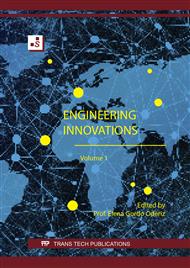[1]
Hoseok Nam, Hyungseok Nam, Doyeon Lee, Potential of hydrogen replacement in natural-gas-powered fuel cells in Busan, South Korea based on the 2050 clean energy Master Plan of Busan Metropolitan City, Energy, Volume 221,(2021), 119783.
DOI: 10.1016/j.energy.2021.119783
Google Scholar
[2]
Aras Karapekmez, Ibrahim Dincer, Development of a multigenerational energy system for clean hydrogen generation, Journal of Cleaner Production, Volume 299, (2021), 126909.
DOI: 10.1016/j.jclepro.2021.126909
Google Scholar
[3]
Duu-HwaLee, Ching-Pin Hung, Toward a clean energy economy: With discussion on role of hydrogen sectors, International Journal of Hydrogen Energy, Volume 37, Issue 20, (2012), Pages 15753-15765.
DOI: 10.1016/j.ijhydene.2012.02.064
Google Scholar
[4]
Seyed Ehsan Hosseini, Mazlan Abdul Wahid, Hydrogen production from renewable and sustainable energy resources: Promising green energy carrier for clean development, Renewable and Sustainable Energy Reviews. Volume 57, (2016), Pages 850-866.
DOI: 10.1016/j.rser.2015.12.112
Google Scholar
[5]
Onur Oruc, Ibrahim Dincer, Development and performance assessment power generating systems using clean hydrogen,Energy, Volume 215, Part B, (2021), 119100.
DOI: 10.1016/j.energy.2020.119100
Google Scholar
[6]
Riza Muhida, Minwon Park, Mohammed Dakkak, Kenji Matsuura, Akira Tsuyoshi, Masakazu Michira, A maximum power point tracking for photovoltaic-SPE system using a maximum current controller, Solar energy materials and solar cells, Vol. 75, Issue 3-4 (2003) Page 697-706.
DOI: 10.1016/s0927-0248(02)00142-3
Google Scholar
[7]
Pyoungho Choi, Dmitri G. Bessarabov, Ravindra Datt, A simple model for solid polymer electrolyte (SPE) water electrolysis, Solid State Ionics 175, (2004), 535-539.
DOI: 10.1016/j.ssi.2004.01.076
Google Scholar
[8]
Vincenzo Liso, Giorgio Savoia, Samuel Simon Araya, Giovanni Cinti, and Søren Knudsen Kær, Modelling and Experimental Analysis of a Polymer Electrolyte Membrane Water Electrolysis Cell at Different Operating Temperatures, Energies, 11, (2018), 3273.
DOI: 10.3390/en11123273
Google Scholar
[9]
Houcheng Zhang, Guoxing Lin, Jincan Chen, Evaluation and calculation on the efficiency of a water electrolysis system for hydrogen production, International Journal of Hydrogen Energy, Volume 35, Issue 20, (2010), Pages 10851-10858.
DOI: 10.1016/j.ijhydene.2010.07.088
Google Scholar
[10]
S.Sawada,T.Yamaki, T.Maeno, M.Asano, A.Suzuki, T.Terai, Y.Maekawa, Solid polymer electrolyte water electrolysis systems for hydrogen production based on our newly developed membranes, Part I: Analysis of voltage-current characteristics, Progress in Nuclear Energy, Volume 50, Issues 2-6, (2008), Pages 443-448.
DOI: 10.1016/j.pnucene.2007.11.029
Google Scholar
[11]
Madalina Ciobanu, Jeremy P. Wilburn, Morgan L.Krim, David E.Cliffel, 1 - Fundamentals in Cynthia G. Zoski (Ed.), Handbook of Electrochemistry, Elsevier Science, Nederland, (2007), Pages 3-29.
DOI: 10.1016/b978-044451958-0.50002-1
Google Scholar
[12]
Lorena M. Ríos-Mendoza, J. Vinicio Macías-Zamora, Alberto R. Zirino-Weiss, Iridium: An option for measurement of the redox potential, Ciencias Marinas (2003), 29(4) (2003), 509-520.
DOI: 10.7773/cm.v29i4.165
Google Scholar


